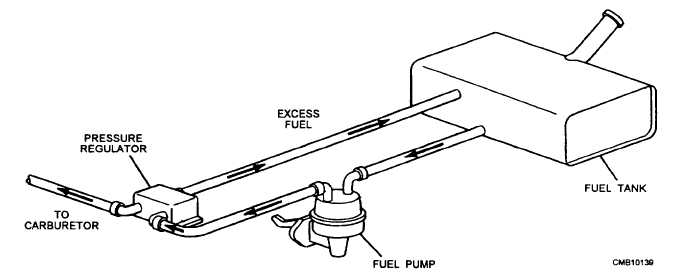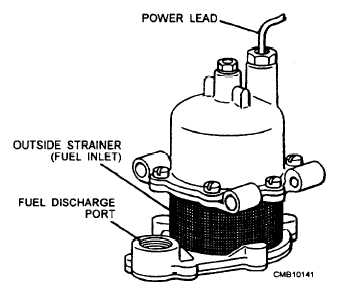
Figure 4-10. - Mechanical positive fuel pump installation.
(fig. 4-10) continues to pump fuel even when the carburetor bowl is filled; therefore, a method of bypassing the fuel back to the tank is required. The NONPOSITIVE type (fig. 4-11) is the one usually found in a gasoline engine. It delivers fuel to the carburetor only when it is needed for the requirements of the engine.
An electric fuel pump, like the mechanical pump, produces fuel pressure and flow for the fuel-metering section of a fuel system.
Electric fuel pumps are commonly used in gasoline fuel systems. They can be located inside the fuel tank as part of the fuel pickupsending unit. Also, it can be located in the fuel line between the tank and the engine.
The advantages an electric fuel pump has over the mechanical fuel pump are as follows:
An electric fuel pump can produce almost instant fuel pressure. A mechanical pump slowly builds pressure as the engine is cranked for starting.
Most electric fuel pumps are a rotary type. This produces a smoother flow of fuel (less pressure pulsations) than a reciprocating, mechanical pump.
Since most electric pumps are located away from the engine, they help prevent vapor lock. An electric fuel pump pressurizes all of the fuel line near the engine heat. This helps avoid vapor lock because pressure makes it more difficult for bubbles to form in the fuel.
Electric rotary fuel pumps include the impeller, the roller vane, and the sliding vane types. They use a circular or spinning motion to produce pressure.
An impeller electric fuel pump is a centrifugal pump, normally located inside the fuel tank. This pump used a small motor to spin the impeller (fan blade). The impeller blades cause fuel to fly outward due to centrifugal force. This produces enough pressure to move the fuel through the fuel lines.
A roller vane electric fuel pump (fig. 4-12) is a positive displacement pump (each pump rotation moves a specific amount of fuel). This pump is located in the main fuel line. Small rollers and an offset mounted rotor disc produce fuel pressure in the pump. When the rotor disc and rollers spin, they pull fuel to one side. The fuel is then trapped and pushed to a smaller area on the opposite side of the pump housing. This action squeezes the fuel between the rollers and the fuel flows

Figure 4-12. - Vane-type electric pump.
Continue Reading